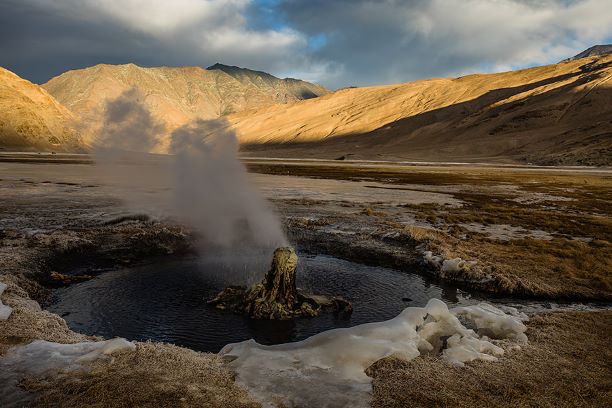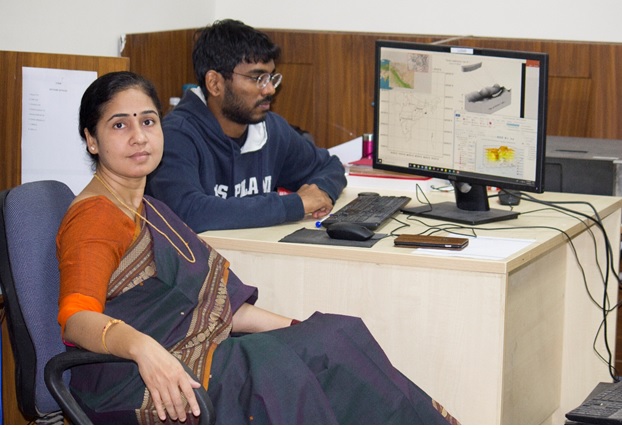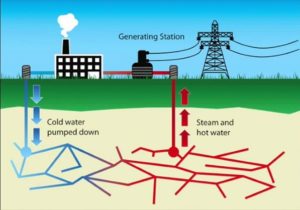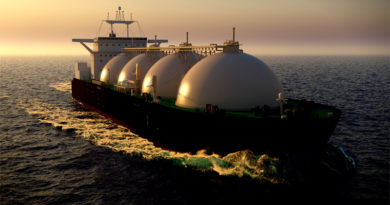Geothermal in India?Bits Pilani Team says Puga in Ladakh has highest Potential

India and Geothermal arent words you hear too regularly. But apparently, among the many diverse options for everything, even Geothermal is a possibility in India. A new research and analysis by Indian researchers show that Ladakh’s Puga field is a good site for further exploration in Geothermal Energy. A team of researchers from Birla Institute of technology and Science Pilani-BITS(Pilani) used 9 parameters and analyzed data from 6 sites to conclude that Puga has the most Geothermal potential. The sites under observation were-Puga in Ladakh, Chhumathang in Jammu and Kashmir, Manikaran in Himachal Pradesh, Tattapani in Chhattisgarh, Unhavre Khed in Maharashtra and Tapoban in Uttarakhand.

Dr Shibani K. Jha and Harish Puppala, from the Department of Civil Engineering, BITS Pilani led the study. In 2017, they used the Kriging interpolation technique and later developed a conceptual model to aid the operational phase of Geothermal reservoir development.

In India there are seven geothermal provinces in: The Himalayas, Sohana, West coast, Cambay, Son-Narmada-Tapi (SONATA), Godavari, and Mahanadi. India started exploration and study of geothermal fields started in 1970. The GSI (Geological Survey of India) has identified 350 geothermal energy locations in the country. The most promising of these is in Puga valley of Ladakh. The estimated potential for geothermal energy in India is about 10000 MW.
But lack of information, about the probable potential quantity of energy that can be extracted, had hindered the progress. The analysis by BITS -Pilani, seeks to fill this gap. Researchers used Thermo-hydro-geological data to conceptualize the geothermal reservoir and used simulation software to assess a key parameter called ’Useful Resource Base’ or URB.
The URB denotes the extraction temperature of a reservoir for a period of 20 Years (typical lifetime for a geothermal bed). The other criteria they used to base their analysis were-cumulative discharge of thermal springs, minimum and maximum electrical resistivity, representative reservoir temperature and others.
Geothermal energy is the natural heat of the earth. Earth’s interior heat originated from its fiery consolidation of dust and gas over 4 billion years ago. It is continually regenerated by the decay of radioactive elements, that occur in all rocks.

From the surface down through the crust, the normal temperature gradient – the increase of temperature with the increase of depth – in the Earth’s crust is 17 °C — 30 °C per kilometer of depth. Below the crust is the mantle, made of highly viscous, partially molten rocks with temperatures between 650 °C — 1250 °C. Major geothermal fields are situated in circum-pacific margins, rift zones of East Africa, North Africa, Mediterranean basin of Europe, across Asia to Pacific.
Currently, hydrothermal energy is being commercially used for electricity generation and for meeting thermal energy requirements. Italy, New Zealand, USA, Japan, Mexico, Philippines, Indonesia are some of the countries which are using geothermal energy for electricity generation and thermal applications. Iceland is almost completely powered by Geothermal energy.
Pic Credit: Darter Photography




